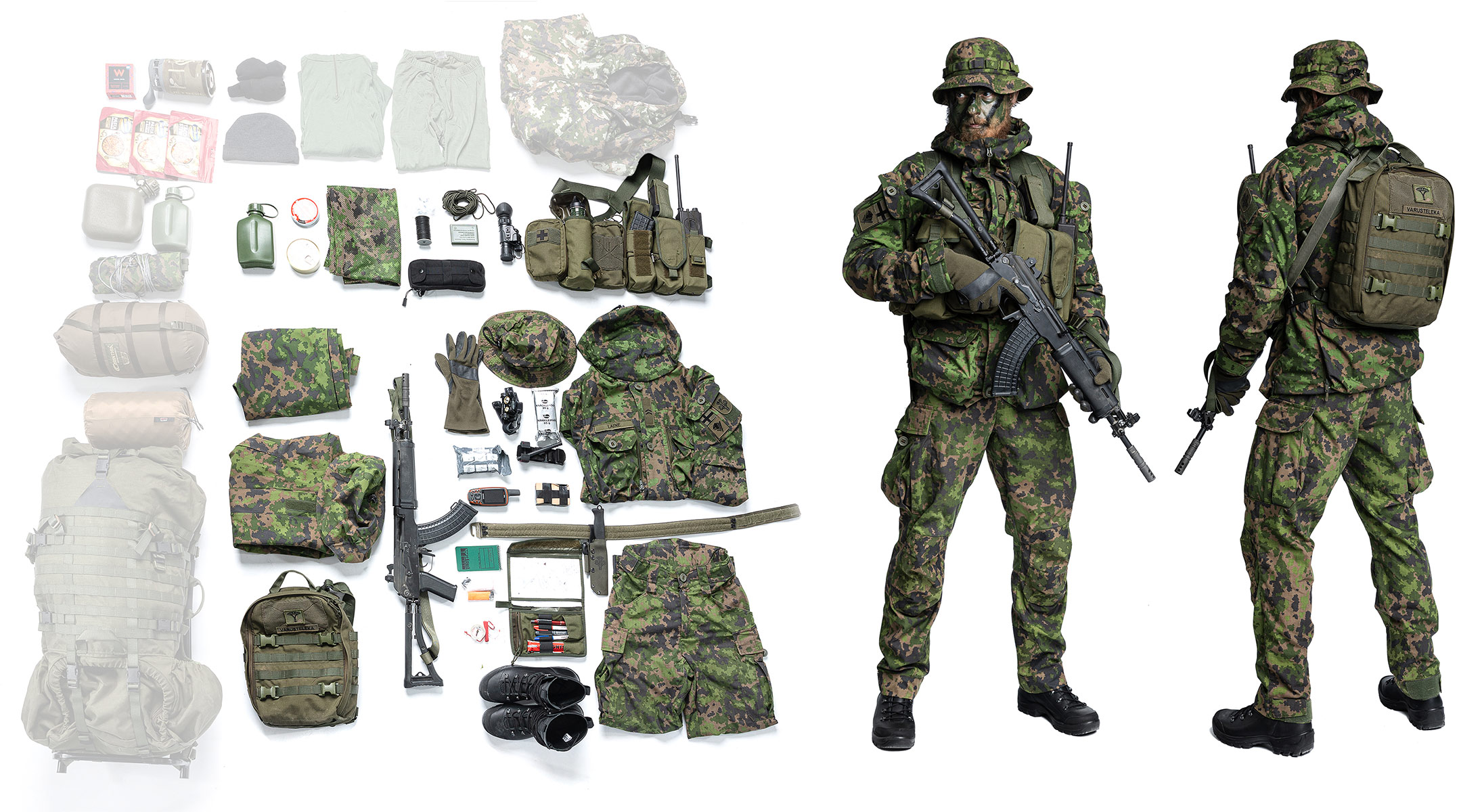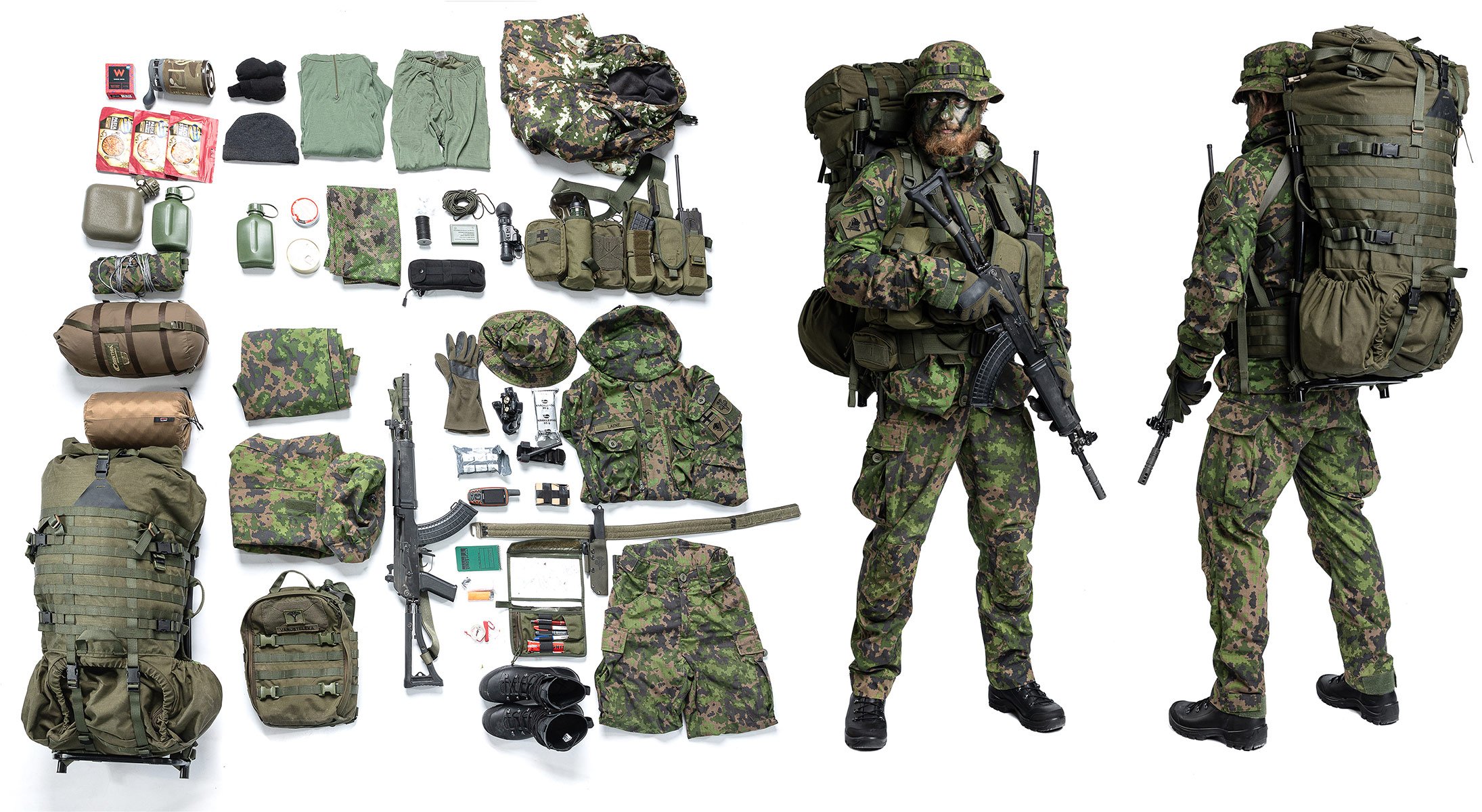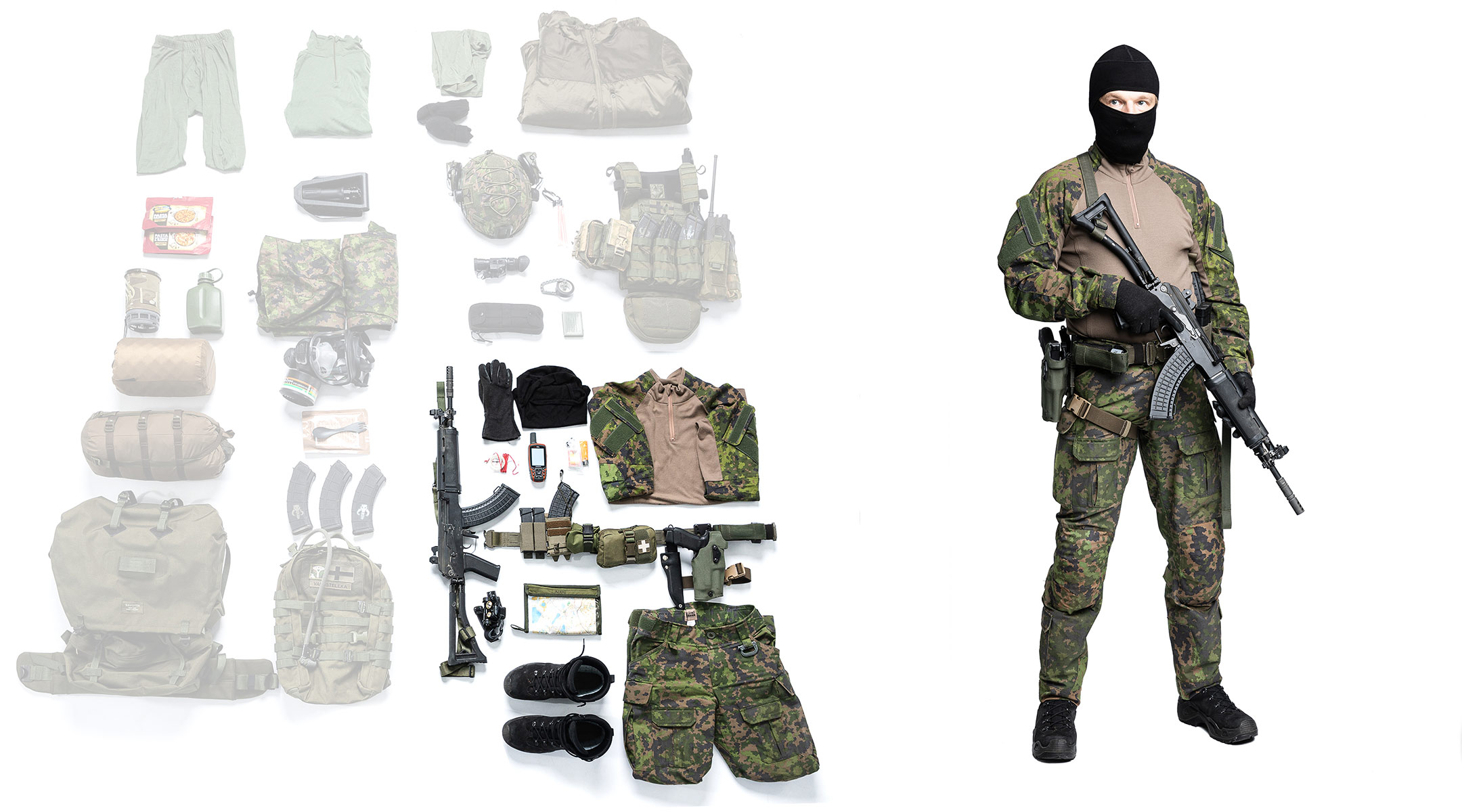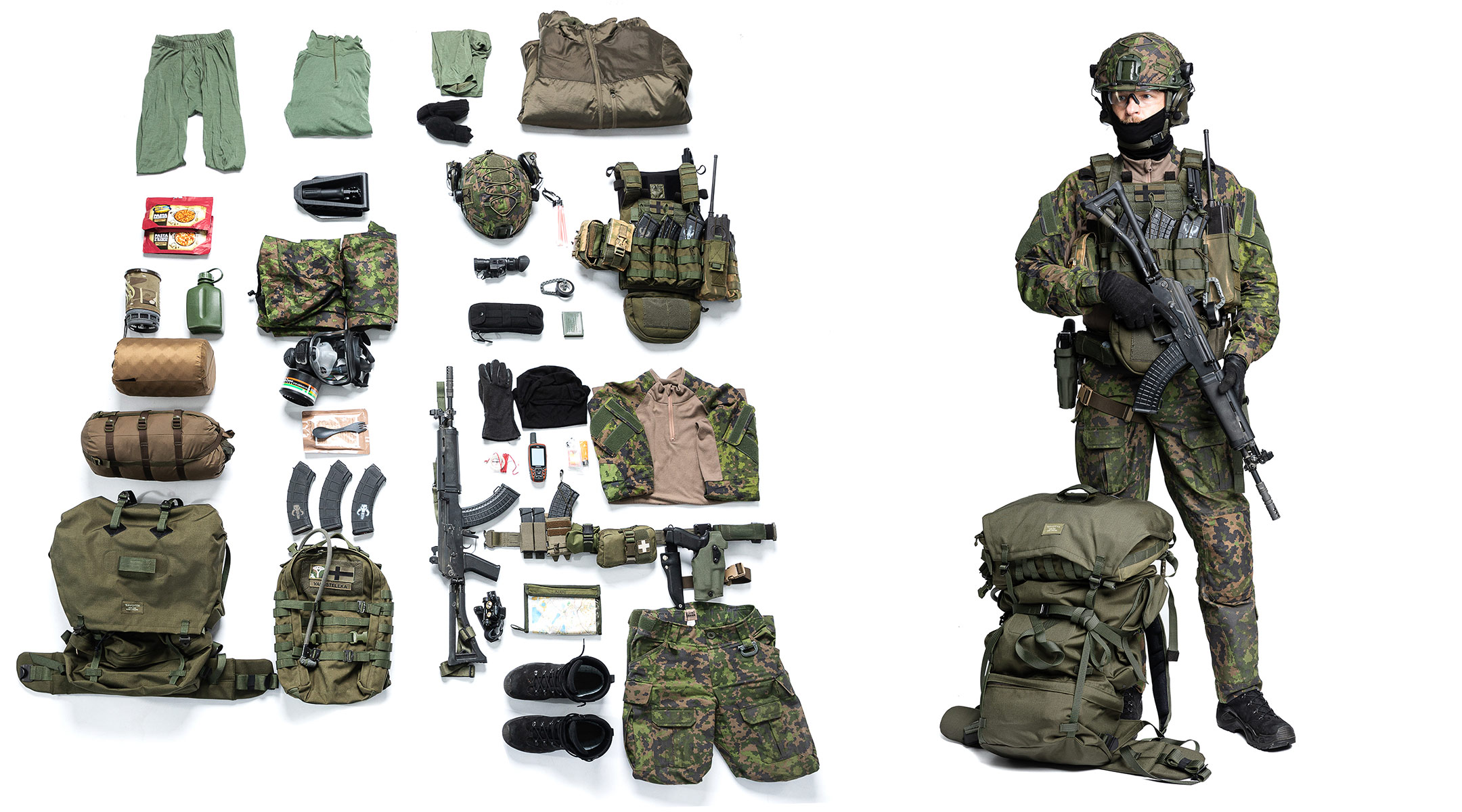
Three lines of gear placement - right gear in the right place
Three lines of gear placement - right gear in the right place
In layered clothing, each layer has a specific role to play. A very similar model can be applied to other gear, too. Different countries use different terms to describe this but the concept is a similar three-layer model. In Finnish, these layers are called circles but elsewhere they are often referred to as lines. In this article, we go through the basic principles of this kind of thinking and give a few examples of how to use the concept in military and civilian applications.
Surviving, carrying out the mission, and staying operational
This concept of gear placement typically has three layers/lines/circles, or whatever you want to call them in your country:
- The first line: survival. Basic equipment that enables you to survive and forms the foundation of the other lines. You never move anything away from here. This line consists of the gear closest to you that you always carry with you. This includes the clothing and the gear that fits in the pockets and on the belt and possibly the firearm.
- The second line: carrying out the mission. This gear enables you to carry out the mission and supports survival. If needed, you can move equipment from the second line to the first line. This line contains the gear that the soldier has on when carrying out the mission but what can be removed when having a break or when at the base. This line usually has the combat vest, plate carrier, chest rig, patrol backpack, or such.
- The third line: staying operational. This gear enables you to remain operational for extended periods of time and transport the required gear. You can move equipment from here to the second and the first line. This line consists of the gear that you need when you are on the move and that carries the equipment needed for camping, food, repairs, etc. These often include the backpack, rucksack, duffel bag, or even a vehicle.
The main principle is that you divide the equipment on these three lines so that they complement each other. The gear you need is always accessible and the more critical the equipment is for the mission at hand or your survival, the closer it is.
You can find a couple of examples of the lines of gear placement below.
Recon trooper
First line:
Your firearm together with the clothing and belt that carry e.g. the following items:
- Knife
- Fire-making tools
- Survival kit
- Spare ammunition in the pockets (30-round box)
- First-aid bandage
- Map
- Compass and GPS
- Equipment for taking notes
- Lamp
- Emergency rations

Second line
Chest rig and daypack that contain e.g. the following items:
- 3 magazines
- Water
- Night vision equipment
- IFAK
- Radio
- Camouflage cloak and camo face paint
- Warm jacket for breaks and/or rain clothing
- Food for the duration of the mission
- Mission-specific gear, such as optics, sensors, or ammo

Third line
Backpack that e.g. contains the following items:
- Spare clothes
- Camo overalls or loft jacket
- Sleeping bag, sleeping pad, tarp or bivy
- Food
- Water
- Cooker
- Spare ammunition
- Spare batteries for various gadgets
- Mission-specific gear that isn’t in use at the moment. For example, radio, explosives, tools, and other similar gear

Infantry soldier or military police
First line
Assault rifle as well as clothing and belt that carry e.g. the following:
- Pistol and spare pistol mags if the pistol is in use. If the pistol isn’t in use, at least one assault rifle magazine
- Pepper spray, telescopic baton, and handcuffs if needed
- Knife
- Tourniquet and the first-aid bandage (Bleeder pouch)
- Map, compass, and GPS
- Note-taking equipment
Furthermore, it is smart to place at least one assault rifle mag pouch and dump pouch on the first line. They can of course also be placed on the second line if desired.

Second line
Helmet, plate carrier, combat vest that contains e.g. the following items:
- 3-4 assault rifle mags
- Water reservoir on the back
- Tourniquet placed in the middle, usable with both hands
- IFAK
- Grenade pouches for at least 2 grenades
- General purpose pouch (gun cleaning kit, compact binoculars, camo face paint, cable ties, tape, light sticks, fire-making tools, etc.)
- Gas mask when required
- Missions-specific gear, such as night vision binoculars, radio, spare can for the machine gun, and large cable ties for tying the prisoners
- Assault pack that can be left in the armored personnel carrier if necessary, containing the following items:
- 2-3 magazines
- Cutlery and dry food
- E-tool
- Rain clothing and/or CBNR suit and gas mask
- Warmer jacket for breaks
- Additional missions-specific gear: e.g. ammo, grenades, flares

Third line
A backpack that contains e.g. the following items and that is stored in the vehicle:
- Spare clothes
- Sleeping bag, sleeping pad

As always, the common sense takes you pretty far. When using this principle, it is vital to know your troop’s mission and your own personal duties and what kind of gear they require. In addition to this, the troop’s operating models and guidelines further define how you apply this. The goal is that the right gear is in the right place and available when needed. To recap, here are the rules of thumb once more:
- Always keep the first line as it is and don’t move anything away from it.
- Adjust the second line according to each mission.
- The third line acts as the storage place during the mission.
The three lines in everyday life
First line
Clothes, the pockets of which contain:
- Phone
- Folding knife
- Small lamp
- Pen and paper
- Keys
Second line
Rucksack or small bag that contains:
- Water bottle
- Warm clothing or rain clothing
- First aid kit
- Food
- Spare battery
Third line
The trunk of the car or saddle bag of a bike that contains:
- Spare clothes
- Water
- Food
- Tools
- Tarp
- Blanket or woobie
- Lamp
- Emergency flare
- Safety vest
Hiker
Wilderness enthusiasts’ gear placement principles are fairly similar to the military ones but vary a bit depending on whether you hike, fish, hunt, or do something combined.
First line
Clothing and belt that carry the following items:
- Knife
- Fire making tools
- Map
- Compass and GPS
- Small first aid kit
- Emergency rations
- Lamp
- Phone
Second line
A daypack for shorter trips that contains:
- Water
- Warm clothing for stopping for a break and/or rain clothing
- Food
- Spare battery
- Other items that you need for example for a short hike to the mountain nearby
Third line
A backpack that for example contains:
- Tent or lean-to
- Sleeping bag and sleeping pad
- Spare clothes
- Food
- Water
- Cooker
- Bigger first aid kit
- Spare batteries
This principle is very useful in civilian use as well. When you have created a sensible and repeatable concept you will also have less stress. No need to wonder where everything is and whether you remembered to bring this or that. Furthermore, when everything is always in the same place, you will also find what you need even when under stress, like during an accident. Testing and trying things out will eventually give you the best solution.
Authors
The CEO of Varusteleka Jari Laine is an active army reservist, survivalist, and a martial artist, with a military background in reconnaisence. On top of this, he has been diagnosed with a severe gear autism.
Major Mika Mäenpää has served in the Finnish military for 20 years and has participated in operations in Afganistan and Africa and in the development of tactics and infantry gear. He trains CrossFit and shooting, possessing a gold medal in the Finnish Sniper competition and has represented Finnish Defense Forces in international sniper competitions.